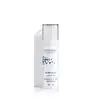What's inside
What's inside
 Key Ingredients
Key Ingredients

 Benefits
Benefits

 Ingredients Side-by-side
Ingredients Side-by-side

Propanediol
SolventAscorbic Acid
AntioxidantButylene Glycol
HumectantGlycerin
HumectantPentylene Glycol
Skin ConditioningCandida Bombicola/Glucose/Methyl Rapeseedate Ferment
AntimicrobialGlyceryl Glucoside
Humectant3-O-Ethyl Ascorbic Acid
Skin ConditioningPanthenol
Skin ConditioningAmmonium Acryloyldimethyltaurate/Vp Copolymer
Prunus Armeniaca Kernel Oil
MaskingSodium Polyacrylate
AbsorbentPolyquaternium-10
Adenosine
Skin ConditioningFerulic Acid
AntimicrobialEctoin
Skin ConditioningGlutathione
Oryza Sativa Bran Oil
EmollientTocotrienols
Skin ConditioningTocopherol
AntioxidantPropanediol, Ascorbic Acid, Butylene Glycol, Glycerin, Pentylene Glycol, Candida Bombicola/Glucose/Methyl Rapeseedate Ferment, Glyceryl Glucoside, 3-O-Ethyl Ascorbic Acid, Panthenol, Ammonium Acryloyldimethyltaurate/Vp Copolymer, Prunus Armeniaca Kernel Oil, Sodium Polyacrylate, Polyquaternium-10, Adenosine, Ferulic Acid, Ectoin, Glutathione, Oryza Sativa Bran Oil, Tocotrienols, Tocopherol
 Reviews
Reviews

Ingredients Explained
These ingredients are found in both products.
Ingredients higher up in an ingredient list are typically present in a larger amount.
You might know this ingredient as Ethyl Ascorbic Acid, a more stable version of ascorbic acid.
Like other types of vitamin C, this ingredient has many benefits including reducing wrinkles, skin soothing, dark spot fading, and fighting against free radicals.
3-O-Ethyl Ascorbic Acid interferes with the process of skin darkening, helping to reduce hyperpigmentation. It also encourages the skin to produce more collagen.
Once applied, 3-O-Ethyl Ascorbic Acid is converted to Vitamin C deeper in the skin's layers. This process is slow but makes this ingredient more tolerable for skin.
The optimum pH range for this ingredient is 4 - 5.5
Learn more about 3-O-Ethyl Ascorbic Acid